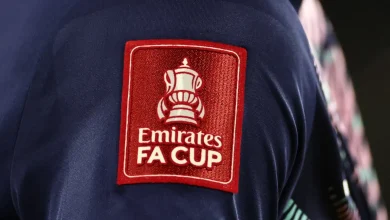Mystery of war heroes solved ahead of Remembrance Sunday

Get the free Morning Headlines email for news from our reporters across the world
Sign up to our free Morning Headlines email
Sign up to our free Morning Headlines email
Dozens of British and Commonwealth war heroes, whose identities have remained a mystery for decades, have finally been identified by Ministry of Defence “war detectives” ahead of Remembrance Sunday.
A total of 52 personnel killed in action during the First and Second World Wars have been named through meticulous historical research and advanced DNA testing.
Additionally, 33 previously unidentified individuals have been rediscovered and laid to rest.
This significant work, carried out by the MoD’s Joint Casualty and Compassionate Centre (JCCC), has brought recognition to those who served across the British army, Royal Marines and Royal Air Force.
While some had received formal burials as unknown soldiers, others had lain where they fell for much of the past century, without a marked grave.
Of the 85 soldiers now commemorated through funeral and rededication services this year, 74 fought in the First World War and 11 in the Second World War.
open image in gallery
Sgt William Augustus Fritz of 4th Battalion of The Royal Fusiliers, who was killed in the first action of the First World War (Ministry of Defence/Crown Copyright/PA)
The youngest of the casualties to be identified, Trooper Francis Dominic, was just 19 when he was killed in Normandy in August 1944.
The oldest was Serjeant Henry Ashton, a career soldier and former railway worker from Derby who died aged 44 in Lens, France, in 1917.
The British army used serjeant as the spelling of the rank until the mid-1950s.
Rededication services to honour the rediscovered casualties will take place in Belgium on 12 and 13 November at St Symphorien Military Cemetery in Mons.
A rededication service will be held for Serjeant William Augustus Fritz of 4th Battalion of The Royal Fusiliers, who was killed in the first action of the First World War on 13 November.
On the morning of 23 August 1914, Sgt Fritz’s battalion was located north of Mons, holding outposts along the canal at Nimy.
German forces attacked and his battalion sustained heavy casualties of around 150 men, including Sgt Fritz, who was just 34 when he died.
He left behind a wife and children who would never know what became of him.
Soldiers of 1st Battalion of The Royal Regiment of Fusiliers and 5th Battalion of The Rifles, and personnel from Nato’s nearby European headquarters, will attend the service.
open image in gallery
Sgt Moore, 21, from Southwark in central London, was a brass musical instrument maker awarded for his actions leading a bombing attack near Heninel during the Battle of Arras (Ministry of Defence/Crown Copyright/PA)
Commemorations case worker for the JCCC Rosemary Barron said it is “a privilege” to help identify the personnel.
Ms Barron said: “As the nation stops this week to remember service personnel who paid the ultimate sacrifice in war, this has been a poignant time to rededicate the graves of these brave men.
“All of these men left behind families who would have mourned their loss and who were left with unanswered questions as to their exact fate.
“It is a privilege to be able to do the work we do and bring these soldiers’ stories to a fitting conclusion.”
Additional rededication services will be held in Belgium on 12 November for Lieutenant Norman Frederick Hunter, Serjeant George Goodson Moore DCM and Private George Hall. All three were killed in the First World War.
Lt Hunter, a keen golfer from Edinburgh, died aged 36 after he was fatally wounded taking part in an attack on Bellewaerde Lake near Hooge.
Sgt Moore, 21, from Southwark in central London, was a brass musical instrument maker who was awarded the Distinguished Conduct Medal for his actions leading a bombing attack near Heninel during the Battle of Arras on 11 April 1917. His remains were discovered near Polygon Wood, Belgium.
Pte Hall, from Stratford, Essex, died aged 31 on 27 October 1918, when his battalion was heavily shelled just two weeks before the 11 November armistice.
Defence minister Lord Coaker said: “We must always remember those who laid down their lives for peace and freedom, and our modern-day armed forces personnel who guard that precious legacy.
“The work of the MoD’s war detectives is a vital part of keeping the memory of our fallen heroes alive.
“Every November, our armed forces draw upon the inspiration of their predecessors to recommit to defending our peace, freedom and way of life.”
The JCCC’s investigations were in collaboration with the armed forces, the National Army Museum and the Commonwealth War Graves Commission.





